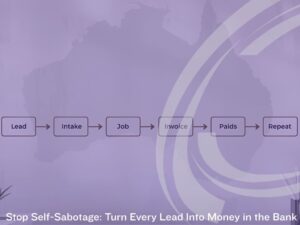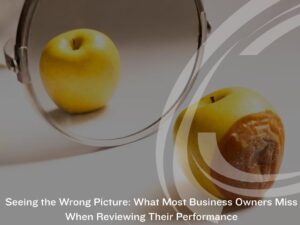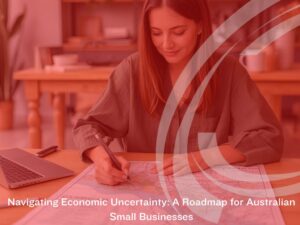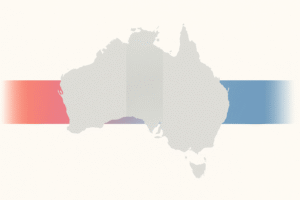Critical minerals deal or commercial colonisation?
What Australia’s new pact really means for your business
Australia and the United States have agreed on a strategic minerals framework that points to billions of dollars for projects across mining and processing. Signals include potential price support for specified inputs, the option for government equity in facilities, and priority offtake for allied buyers. Markets reacted strongly, then settled as investors weighed timelines and delivery risk.
Two projects stand out as near-term anchors. A proposed Western Australian gallium facility linked to a large alumina producer, and the Nolans rare-earths development in the Northern Territory, which targets magnet materials. Both could strengthen the security of supply. Both still require feasibility work, capital, construction and commissioning.
China continues to dominate refining and magnet production. The Australia-US critical minerals partnership is a long game. It can speed approvals, unlock export credit and coordinate offtake. It cannot compress multi-year engineering and build schedules into months.
What was signed, and why it matters
The framework sets a pipeline of eligible projects. It creates funding lanes that can include concessional finance, equity options and risk-sharing tools. Most importantly, it allows governments to secure offtake from projects they back.
Offtake rights channel set volumes to priority buyers on agreed specifications. That reduces reliance on spot markets, which are volatile for rare earths and allied inputs. For developers, bankable offtake strengthens the case for debt and helps projects reach a final investment decision.
Price support is under consideration. A well-designed floor reduces downside risk during construction and ramp-up. It works best when it is time-limited, transparent and tied to performance. It should step down as plants scale and unit costs fall. The goal is to accelerate learning curves, not to hide inefficiency.
The minerals partnership is not a turnkey solution. Approvals, procurement and workforce development still take time. The signal is clear, though. Governments want new capacity and are willing to use public balance sheets and purchase commitments to get it.
The value of a Trump promise, weight and trust in view
Presidential statements carry institutional weight. They shape agency priorities, budget attention and procurement behaviour. When a US President highlights a minerals partnership with Australia, lenders, officials and primes take notice. That signal lifts the probability of timely decisions inside government systems.
Trust is a separate question. Business leaders should weigh a presidential pledge against the speaker’s record as well as the office. Donald Trump has a history of bold commitments that sometimes shift or reverse. High-profile examples include border funding arrangements that evolved over time and tax transparency promises that did not materialise as first stated. This pattern suggests keeping scenario ranges wide when estimating the delivery value of a Trump promise.
How should Australian executives act on that reality? Anchor your plans on durable instruments, not applause lines. Export credit letters of interest, defence demand for gallium and magnet inputs, and formal offtake structures have persistence. They outlast press events and news cycles. Use them as baselines in your models. Then stage capital in tranches that match verified milestones. Treat rhetoric as a sentiment tailwind, not as a project schedule.
How the United States approach mirrors China’s playbook
China built dominance with patient capital across the chain. It financed mines, scaled separation plants and concentrated magnet manufacturing at home. It used long offtake agreements and targeted export measures to reinforce the domestic industry. Australian producers have long sold into this system.
The Australia-US critical minerals partnership borrows effective tactics in an allied form. Public money can take equity positions. Offtake can be secured in exchange for support. Price tools are being explored to reduce early-stage risk. Early volumes are reserved for buyers within the partnership. The aim is a resilient alternative pathway for strategic materials.
The models are not the same. Australian rules on consultation, environment and disclosure are stricter, and transparency is higher. Yet the commercial mechanics remain familiar. Capital and contracts shape where value is captured. That is why midstream location decisions, not just new pits, will determine how much benefit stays onshore.

Commercial colonisation, or strategic partnership?
Commercial colonisation occurs when external capital and contracts lock up volumes, set standards, and keep most value-add offshore. It is visible when long offtake commitments drain local availability during tight markets. It is visible when price tools favour external priorities over domestic resilience. It is visible when separation and magnet steps remain overseas, so Australia exports oxides and imports finished parts.
The current framework contains equity options, offtake rights and price signals. These can either entrench dependency or create a balanced partnership. The outcome depends on design and execution.
Three tests help assess the trajectory.
- Value captured onshore
Are more separation plants, magnet-related steps and component lines commissioned in Australia, or do we continue to export semi-processed material for finishing elsewhere? The more steps we host, the stronger our bargaining power, the deeper our skill base, and the larger the secondary markets for services. - Sovereignty safeguards
Are offtake rights transparent, with clear rules to protect domestic needs in a crisis, and with sunset or rebalance provisions as markets mature? This matters for industry confidence as much as for national resilience. - Market durability
Do price tools de-risk early phases, then taper as productivity improves? Support that never steps down can dull discipline, deter innovation and drain public budgets.
If Australia expands midstream capacity, builds skills and keeps procurement open and fair, the Australia-US critical minerals partnership will look like a strategic partnership that grows value onshore. If midstream stays offshore and offtake continuously pulls volumes away, it will feel like colonisation by contract.
Opportunities created by the minerals partnership
The arrangement will not lift every boat. It will lift prepared boats. The first wave of demand is likely across three groups.
Upstream and project delivery
- Specialist mining services and mobile plant maintenance
- Civil construction, concrete and earthworks for remote sites
- Camp construction, catering and facilities management
- Heavy haulage, rail support and port logistics
- Environmental monitoring, water, waste and tailings management
Processing and midstream
- Fabrication for tanks, pressure vessels and process pipework
- Hydromet and solvent extraction skids, control systems and commissioning support
- Laboratory testing, metrology and quality control for rare-earth products
- Packaging, storage and shipping with a chain-of-custody and traceability
Enablers and assurance
- Approvals and stakeholder engagement
- Workforce development, safety equipment and emergency response
- Operational technology, cybersecurity, and supply-chain tracking
- Finance, risk and procurement assurance for large contracts
All three lanes connect to the minerals partnership and to allied demand. The common thread is compliance, readiness and proof.
Risks leaders must price in
Timeline risk
Approvals, procurement and commissioning take years. Expect staggered milestones and phased ramp-ups. Design contracts with extension and variation options. Keep workforce plans flexible.
Policy risk
Export credit letters of interest signal intent. They are not binding commitments. Price support is still being designed. Stage capital to verified steps, not headlines.
China exposure
China continues to set the tempo in separation and magnet output. Export controls and price moves can ripple through orders. Diversify customers and freight routes. Build stock buffers for critical parts.
Market risk
Price tools set too high for too long can dull discipline and misallocate capital. Track how prioritised offtake affects spot and contract behaviour. Align hedging to real exposures.
Community and ESG
Water, waste, land access and radiation are central issues. Engage early and in good faith with Traditional Owners and local communities. Strong relationships reduce surprise and speed delivery.
What the partnership could do for pricing and certainty
Developers often fail during downturns rather than at peaks. A credible floor during construction and early operations can stabilise investment and smooth capex cycles. If a project misses performance targets, support should taper or stop. If it beats plan, support should step down as scale improves.
Certainty also comes from standardisation. Shared specifications, testing methods and chain-of-custody records make buyers confident. The minerals partnership can accelerate common standards and lift quality across the supply chain. That helps smaller suppliers win repeat work and lowers risk premiums for banks and insurers.
Scenario planning for 2026 to 2030
Base case
First projects reach final investment decision from 2026 to 2028. Separation capacity expands in Australia. Some magnet-related steps begin here, although much value-add remains overseas. China retains price leadership. The partnership supports steady progress.
Upside case
Strategic reserve design lands well. A credible price floor helps two or three plants reach scale earlier. Allied co-investment expands magnet capacity. Australia captures more value onshore and secures long-term offtake with global manufacturers.
Downside case
Export controls tighten. Project timelines slip. China cuts prices to pressure margins. Subsidies keep marginal capacity alive, which drags on productivity. Cash buffers and flexible procurement separate resilient firms from the rest.
Use these scenarios to guide capital sequencing, contract structures and hiring plans. Review the risk profile each quarter as the minerals partnership moves from framework to delivery.

What does this mean for Australian small business?
Small businesses stand to gain if they are tender-ready. The fastest wins will go to firms that can prove compliance, mobilise quickly and build relationships with prime contractors.
Who is best placed to benefit
- Engineering and trades, including fabricators, machinists, welders, electricians and instrumentation fitters
- Civil contractors, concrete and earthworks crews, remote camps and facilities management
- Heavy haulage operators, pilot vehicle teams, rail maintenance and port stevedoring
- Environmental and laboratory services, such as sampling, metallurgy labs, water testing and dust monitoring
- Technology providers for operational cybersecurity, SCADA support and asset tracking
- People and training providers, including safety trainers and apprenticeship programs
- Professional services for approvals, stakeholder engagement, procurement assurance and risk
Indigenous-owned enterprises aligned to local benefit plans and cultural heritage management
How to increase your chances of winning work
- Be documentation-ready
Prepare a two-page capability statement targeted to mineral processing, separation, logistics or site services. Include key personnel, relevant projects, safety statistics, quality standards and insurance. Use the language that appears in tender scopes linked to the minerals partnership. - Build essential policies and procedures
Create or update work health and safety policies, environmental management plans, chain-of-responsibility procedures, incident reporting and corrective action processes. Align your manuals to ISO 9001 quality, ISO 14001 environment and ISO 45001 safety where practical. Store controlled copies and maintain version history. - Confirm compliance and insurance
Keep certificates current and accessible. Typical requests include public liability, professional indemnity where relevant, workers’ compensation, plant and equipment cover, and motor fleet. Add a simple compliance register so you can prove currency in minutes. - Strengthen systems
Adopt job costing, asset registers, maintenance logs and QA checklists that match the needs of process plants and remote worksites. Use digital forms where possible so evidence is time-stamped and easy to share with auditors. - Register on vendor portals
Pre-qualify with the prime contractors and EPCM firms attached to priority projects. Upload policies, procedures, certifications and safety statistics. Complete the required questionnaires carefully. If a portal offers health checks, fix gaps immediately. - Create targeted marketing materials
Build a concise capability deck for meetings with larger organisations. Include one slide that maps your services to the specific scopes in current or expected packages. Add two short case studies that prove you can work to spec, on time and safely. Prepare a one-page summary for industry days and briefings. - Build relationships early
Attend supplier briefings, regional industry days and chamber events connected to the minerals partnership. Follow up with procurement and package managers within one week. Share your capability statement and offer a short call to align on upcoming scopes. - Stage capital and workforce
Secure lines of credit and plan equipment purchases in phases that match verified milestones. Recruit scarce skills early, then scale as orders firm up. Use traineeships with local TAFEs to build a pipeline for longer projects. - Plan for China contingencies
Dual-source critical inputs and identify alternative freight routes for time-sensitive shipments. Keep a short supplier risk register that you update monthly. - Demonstrate ESG credibility
Prepare a short community engagement plan and a water management summary. Track incidents and corrective actions. Evidence of discipline and transparency is often the deciding factor in close contests.
Do these ten things, and your small business moves from interested observer to credible bidder. The minerals partnership will reward suppliers who can show quality, safety, compliance and proof of past performance, not just enthusiasm.
China, price power and the long game
China sets the tempo for separation and magnet output. Even with new plants in Australia and allied countries, that reality will last for years. The minerals partnership seeks to widen the pathway, reduce the cost of disruption and negotiate from a position of greater strength.
Rare-earth inputs are small by value and enormous by consequence. They sit inside vehicles, wind farms and defence systems. A shortfall in a single component can slow entire factories. That is why offtake, common standards and transparency matter. They turn policy into certainty for manufacturers and contractors.
Final take
This partnership is strategic statecraft with commercial teeth. It brings capital, coordination and a seat at the table where standards and specifications are set. It also introduces new dependencies through equity stakes, prioritised offtake and price tools. Poor design could tilt the outcome toward commercial colonisation. Good design can convert it into durable capability, high-quality jobs and stronger communities.
Treat the Australia-US critical minerals partnership as a credible platform with execution risk. Measure success by the number of Australian refineries, furnaces and component lines that run at scale. Plan around milestones, not slogans. Bank the institutional anchors. Discount promises that rest on personality alone.
How SBAAS can help
SBAAS helps Australian enterprises turn policy into contracts and cash flow. We map the minerals partnership to your pipeline, build tender-ready documentation, and align systems, compliance and insurance to buyer requirements. We develop targeted capability statements and outreach packs for meetings with major contractors and procurement teams.
We also undertake feasibility studies from time to time for project sponsors and financiers. For those engagements, we commission independent technical reports. We are always looking for appropriately skilled technical consultants across Australia to support this work. SBAAS gives preference to Australian small businesses in our procurement processes.
Ready to position your business for the next wave of opportunities? Book an appointment or learn more about SBAAS.
Sources
ABC News. (2025, October 22). Critical minerals industry cheers deal that will ‘encourage greater investment’ as stock prices swing. https://www.abc.net.au/news/2025-10-22/critical-minerals-industry-us-china-deal-rare-earths-stocks/105915274
ABC News. (2025, October 21). Donald Trump says the critical minerals deal with Australia will produce ‘so much’ in the race against China. https://www.abc.net.au/news/2025-10-21/australia-us-critical-minerals-framework-trump-china/105914736
The Guardian. (2025, October 21). Australia and the US have signed a critical minerals deal to take on China’s monopoly. Here’s what you need to know. https://www.theguardian.com/world/2025/oct/21/australia-us-critical-minerals-rare-earths-deal-china-explainer
The Guardian. (2025, October 22). Albanese’s critical minerals deal isn’t good economics, but in Trump and Xi’s new world, bargaining chips matter. https://www.theguardian.com/australia-news/2025/oct/22/albaneses-critical-minerals-deal-isnt-good-economics-but-in-trump-and-xis-new-world-bargaining-chips-matter
The Guardian. (2025, October 18). What could a Trump deal on critical minerals mean for Australia, and could MAGA be a sticking point? https://www.theguardian.com/business/2025/oct/18/albanese-trump-white-house-visit-critical-mineral-deal-australia
Reuters. (2025, October 20). US, Australia to invest 2 billion dollars in critical minerals, advance Alcoa gallium project. https://www.reuters.com/business/us-australia-invest-2-billion-critical-minerals-advance-alcoa-gallium-project-2025-10-20/
Reuters. (2025, October 21). US Australia rare earths deal is a start but will not shake China dominance any time soon. https://www.reuters.com/world/china/us-australia-rare-earths-deal-is-start-wont-shake-china-dominance-any-time-soon-2025-10-21/
Reuters Breakingviews. (2025, October 21). US Aussie critical minerals pact is worthy stretch. https://www.reuters.com/commentary/breakingviews/us-aussie-critical-minerals-pact-is-worthy-stretch-2025-10-21/
Mining.com. (2025, October 20). Trump signs agreement on critical minerals with Australia. https://www.mining.com/web/trump-signs-agreement-on-critical-minerals-with-australia/
Discovery Alert. (2025, October 21). Trump and Australia sign historic 8.5 billion dollar critical minerals partnership. https://discoveryalert.com.au/news/trump-critical-minerals-agreement-2025/
Valley Lookout. (2025, October 20). Australian mining company expands Horse Heaven project as Trump agrees to 8.5 billion dollar critical minerals deal. https://valleylookout.com/2025/10/20/australian-mining-company-expands-horse-heaven-project-as-trump-agrees-to-8-5b-critical-minerals-deal/
BBC News. (2025, October 21). Australia US rare earths partnership, what it means for global supply chains. https://www.bbc.com/news/articles/cly9kvrdk2xo
news.com.au. (2025, October 21). Australian mining stocks soar following Albanese Trump critical minerals deal. https://www.news.com.au/finance/business/mining/australian-mining-stocks-soar-following-albanesetrump-critical-minerals-deal/news-story/60a43557274f7793a9c3ad46498a0eaf
The Australian Financial Review. (2025, October 21). Truly remarkable, Trump deal to supercharge Aussie rare-earth sector. https://www.afr.com/companies/mining/truly-remarkable-trump-deal-to-supercharge-aussie-rare-earth-sector-20251021-p5n41d
CNBC. (2025, October 21). Shares of Australian rare-earth miners surge on 8.5 billion US deal. https://www.cnbc.com/2025/10/21/shares-of-australian-rare-earth-miners-surge-8-5-billion-us-critical-minerals-deal-lynas-alcoa-pilbara.html
The New York Times. (2025, October 21). Australia deepens rare-earths partnership with the United States. https://www.nytimes.com/2025/10/21/world/australia/rare-earths-us-partnership.html
Investing News. (2025). Australia’s latest mining deals and financing trends. https://investingnews.com/australia-latest-mining-deals/
ABC News. (2025, October 16). Australia sees opportunity in China United States rare earths dispute. https://www.abc.net.au/news/2025-10-16/trump-albanese-xi-critical-minerals-us-china/105884214
Alcoa. (2025, August 4). Alcoa explores feasibility of gallium critical mineral production in Western Australia. https://news.alcoa.com/press-releases/press-release-details/2025/Alcoa-Explores-Feasibility-of-Gallium-Critical-Mineral-Production-in-Western-Australia/default.aspx
U.S. Export Import Bank. (n.d.). Letter of Interest, user guide. https://img.exim.gov/s3fs-public/managed-documents/Letter%20of%20Interest%20Form%20User%20Guide%20Final.pdf
U.S. Export Import Bank. (n.d.). Letter of Interest. https://www.exim.gov/resources/applications-forms/letter-interest
Austrade. (2025, April). Australian Critical Minerals Prospectus. https://international.austrade.gov.au/content/dam/austrade-assets/international/documents/reports/critical-minerals/australian-critical-minerals-prospectus-april-2025.pdf
Department of the Prime Minister and Cabinet. (2025, April 24). Critical Minerals Strategic Reserve. https://www.pmc.gov.au/domestic-policy/critical-minerals-strategic-reserve

Eric Allgood is the Managing Director of SBAAS and brings over two decades of experience in corporate guidance, with a focus on governance and risk, crisis management, industrial relations, and sustainability.
He founded SBAAS in 2019 to extend his corporate strategies to small businesses, quickly becoming a vital support. His background in IR, governance and risk management, combined with his crisis management skills, has enabled businesses to navigate challenges effectively.
Eric’s commitment to sustainability shapes his approach to fostering inclusive and ethical practices within organisations. His strategic acumen and dedication to sustainable growth have positioned SBAAS as a leader in supporting small businesses through integrity and resilience.
Qualifications:
- Master of Business Law
- MBA (USA)
- Graduate Certificate of Business Administration
- Graduate Certificate of Training and Development
- Diploma of Psychology (University of Warwickshire)
- Bachelor of Applied Management
Memberships:
- Small Business Association of Australia –
International Think Tank Member and Sponsor - Australian Institute of Company Directors – MAICD
- Institute of Community Directors Australia – ICDA
- Australian Human Resource Institute – CAHRI
Our Consulting Services

Management Consulting
Compliance & Risk

Professional Writing Services
Consistency in Communication

Small Business Consulting
Sustainable Businesses

Start-ups
Set-up for Success
Further reading

Pragmatism Wins: How Australian Businesses Turn AI Hype Into Real Results
Australian organisations are moving beyond experiments. This article shows how Australian businesses across all sectors and sizes can scale value, manage risk, and boost productivity with pragmatic AI.

Stop Self-Sabotage: Turn Every Lead Into Money in the Bank
Winning work is hard. Losing time and cash to clunky admin is optional. This guide shows how to design an automated business process that captures leads, books jobs, issues invoices with timely reminders, and keeps clients returning. Plain English, practical steps, and a sharp focus on simplification, speed, and cash flow.

Seeing the Wrong Picture: What Most Business Owners Miss When Reviewing Their Performance
Business owners aren’t short on data, but many are missing what matters most. Discover what most business owners miss when reviewing their performance and how to shift from surface-level tracking to strategic insight.

Navigating Economic Uncertainty: A Roadmap for Australian Small Businesses
Discover how global economic shifts and local consumer sentiment are reshaping Australian small businesses. Equip yourself with actionable insights and strategies to thrive amidst uncertainty.

The Hidden Cost of Success: How Leadership Burnout is Crippling Australia’s Small Business Sector
Leadership burnout is rising fast across Australia’s small business sector. This article unpacks what it looks like, what causes it, and how SME leaders can protect themselves and their teams before the damage becomes irreversible.

From Centre to the Edges: A Practical Guide to the Political Left to Right Scale for Australian Business
We hear “far left” and “far right” every day. This guide starts in the middle, explains each step to the edges, and shows what the political left-to-right scale means for Australian enterprises of all sizes.
SBAAS Events
What our clients are saying about us
Posted onTrustindex verifies that the original source of the review is Google. Eric and Trudi recently wrote a tender for me and the experience was amazing. I went into the process in a state of complete overwhelm. Eric was able to break it down into achievable chunks for me, and reassure me that I had a great service and business model to offer. I came out the other end of the process with all of my business policies, a better understanding of my offer, and a foundation to launch all future tender applications. Eric took all of my information and turned it into a pretty package that I could market.Posted onTrustindex verifies that the original source of the review is Google. SBAAS were fantastic to work with on a detail-heavy tender with a tight turnaround. Their team helped us shape and compile our content to deliver a strong, high-quality submission. Highly recommend SBAAS to anyone looking for strategic support with tender development, with a touch of good humour along the way.Posted onTrustindex verifies that the original source of the review is Google. We engaged SBAAS to support the development of a complex government tender and couldn’t be happier with the outcome. SBAAS' professionalism, attention to detail, and ability to quickly understand our business and translate that into a compelling, well-structured submission were exceptional. They were responsive, collaborative, and a genuine extension of our team. Highly recommend for anyone looking for strategic, high-quality bid and tender writing support.Posted onTrustindex verifies that the original source of the review is Google. Eric and Team go above and beyond. They do an excellent job with researching to get everything that is legally required for Policies and QMS. Would recommend them them to everyone especially all the bookkeepers and accountants. Thank you guys, and extreme job. Love you work as always. 😀Posted onTrustindex verifies that the original source of the review is Google. Extremely professional and far exceeded by expectations. I will definitely be using their services again and highly recommend them. They have a spirit of excellence in everything they do which shines through when dealing with them.Posted onTrustindex verifies that the original source of the review is Google. Impressive consulting experience! The team is highly professional, with a hands-on approach that adds real value. Their dedication and expertise truly stand out. Highly recommended!Posted onTrustindex verifies that the original source of the review is Google. Super knowledgable company that provides great advice and support for small business. Super friendly, highly recommend.Posted onTrustindex verifies that the original source of the review is Google. As a new business owner, I recognised the value in seeking a business coach to help me achieve significant goals. After a disappointing experience with a previous coach, I was initially hesitant to try again. However, after seeing SBAAS's complimentary action plan, I thought there was no harm in investigating. Eric quickly identified gaps in my systems, and through a few targeted adjustments, I saw an immediate increase in both leads and sales. These changes also improved profitability—highlighting a major issue I hadn’t been aware of, as my previous coach’s guidance had me working for less than $7 per hour! I look forward to continuing working with Eric.
